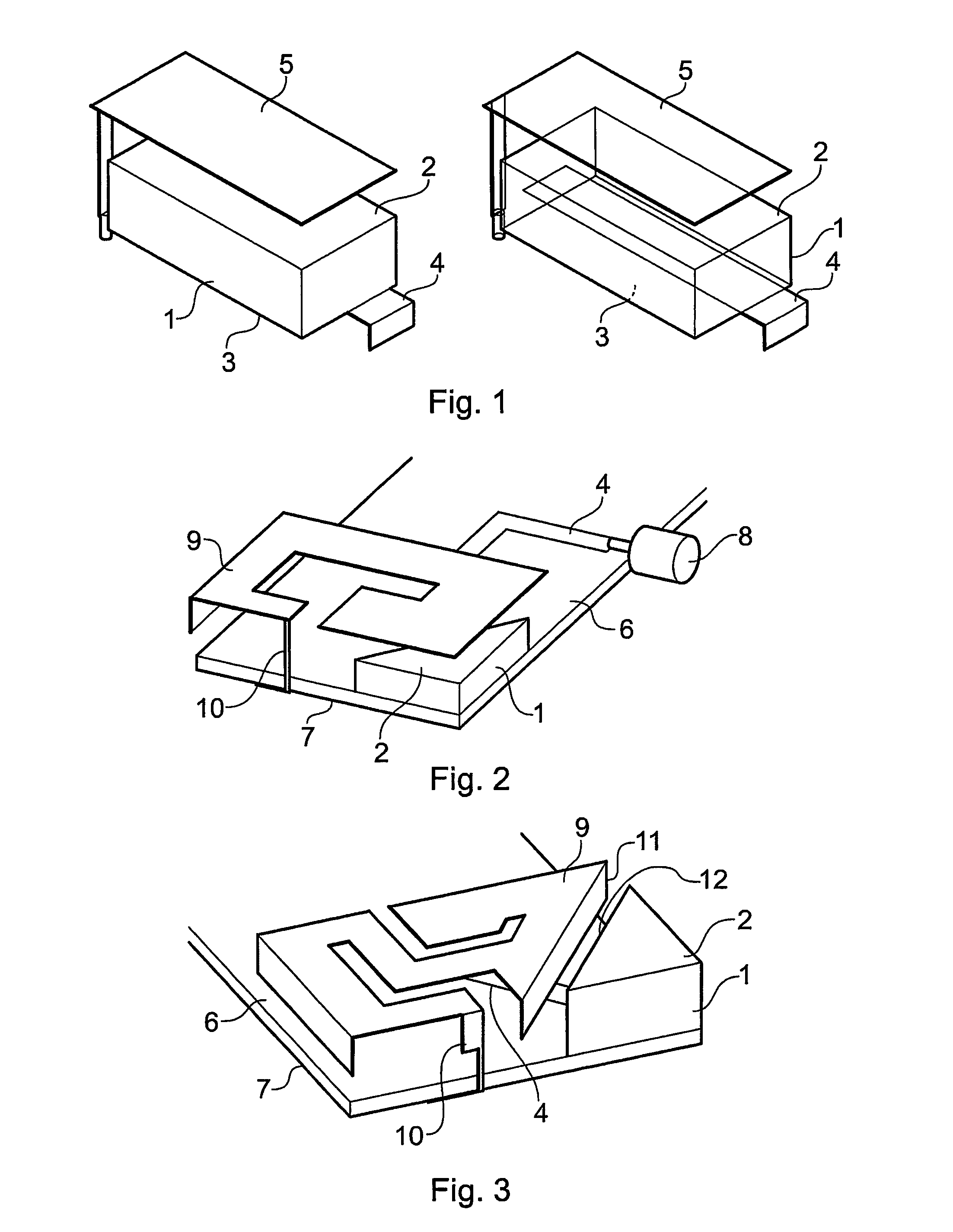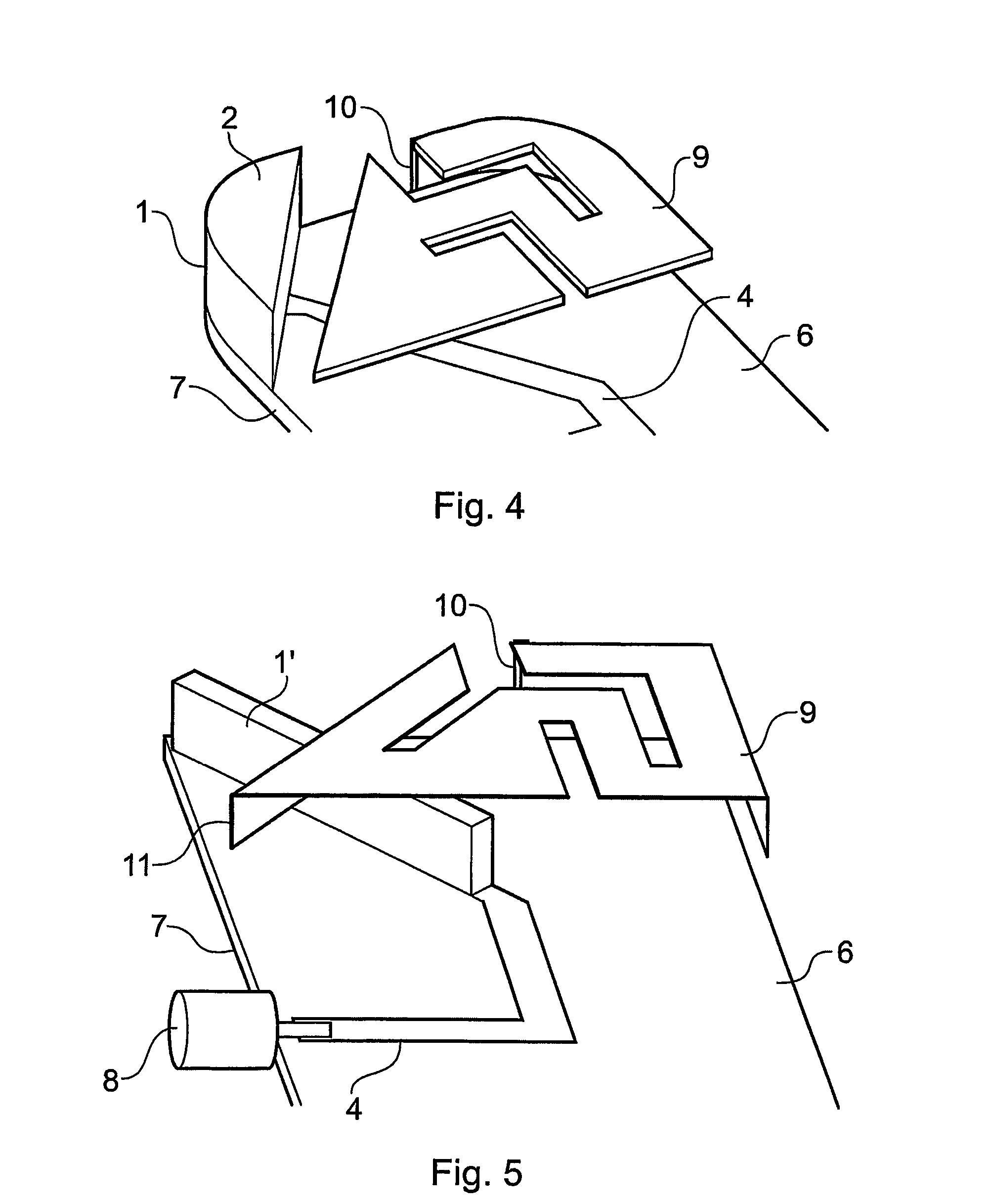Hybrid antenna using parasitic excitation of conducting antennas by dielectric antennas
a dielectric antenna and conducting antenna technology, applied in the direction of antenna earthing, resonant antenna, radiating element structure, etc., can solve the problem of not being designed to radiate, and achieve the effect of improving bandwidth and increasing bandwidth for cylindrical dielectric resonator antennas
- Summary
- Abstract
- Description
- Claims
- Application Information
AI Technical Summary
Benefits of technology
Problems solved by technology
Method used
Image
Examples
Embodiment Construction
[0034]For the avoidance of doubt, the expression “electrically-conductive antenna components” defines a traditional antenna component such as a patch antenna, slot antenna, monopole antenna, dipole antenna, planar inverted-L antenna (PILA) or any other antenna component that is not a DRA, HDA or DLA. Furthermore, these antenna components are specifically designed to radiate at a predetermined frequency or frequencies in a manner useful for telecommunications applications. The expression “antenna components” does not include parasitic patches or the like that simply modify the resonance characteristics of the dielectric antenna, but only actual antenna components that are configured to radiate in a useful and predetermined manner.
[0035]Additionally, for the purposes of the present application, the expression “dielectric antenna” is hereby defined as encompassing DRAs, HDAs and DLAs, although in some embodiments DRAs are specifically excluded.
[0036]Embodiments of the present invention...
PUM
 Login to View More
Login to View More Abstract
Description
Claims
Application Information
 Login to View More
Login to View More - Generate Ideas
- Intellectual Property
- Life Sciences
- Materials
- Tech Scout
- Unparalleled Data Quality
- Higher Quality Content
- 60% Fewer Hallucinations
Browse by: Latest US Patents, China's latest patents, Technical Efficacy Thesaurus, Application Domain, Technology Topic, Popular Technical Reports.
© 2025 PatSnap. All rights reserved.Legal|Privacy policy|Modern Slavery Act Transparency Statement|Sitemap|About US| Contact US: help@patsnap.com



